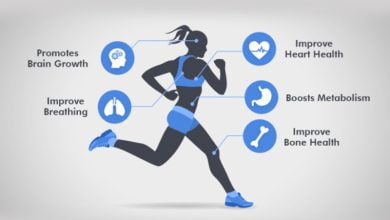
Introduction:
Jumping jacks are a classic exercise that has stood the test of time in the realm of health and fitness. Simple yet effective, jumping jacks offer a full-body workout that improves cardiovascular health, builds strength, and boosts overall fitness levels. From military training to gym classes and home workouts, jumping jacks remain a staple exercise for people of all ages and fitness levels. This exploration delves into the history, benefits, variations, and techniques of jumping jacks, highlighting their enduring popularity and efficacy in promoting health and fitness.
Origins and Evolution:
Jumping jacks have a rich history that dates back centuries, with roots in military training and physical education. The exercise is believed to have originated from jumping exercises performed by ancient warriors and athletes to improve agility, coordination, and cardiovascular endurance. Over time, jumping jacks evolved into a standardized exercise used in military drills, calisthenics routines, and fitness programs worldwide. Today, jumping jacks continue to be embraced as a fundamental exercise for promoting health and fitness in diverse populations.The jumping jack, a deceptively simple yet effective exercise, has a rich and intriguing history that spans centuries. From its origins in military training to its widespread adoption in fitness routines worldwide, the jumping jack has evolved alongside changes in physical culture, exercise science, and societal norms.
Ancient Roots:
While the exact origins of the jumping jack are difficult to trace, variations of its fundamental movements can be found in ancient cultures across the globe. In ancient Greece, for example, soldiers engaged in vigorous physical training known as “gymnasia,” which included exercises such as jumping, stretching, and calisthenics. Similarly, ancient Chinese martial arts and Indian yoga practices incorporated dynamic movements that bear resemblance to the modern jumping jack.
Military Origins:
The jumping jack, as we know it today, likely emerged during the 19th century in military contexts. Military drills and training regimes often included exercises designed to improve soldiers’ agility, coordination, and cardiovascular endurance. The jumping jack, with its combination of jumping, arm movement, and rhythmic coordination, proved to be an efficient and versatile exercise for achieving these goals.
Early Variations:
Early variations of the jumping jack may have been known by different names or performed with slight variations in technique. Some historical accounts refer to similar exercises as “side-straddle hops” or “star jumps.” These exercises typically involved jumping from a standing position while simultaneously spreading the legs and raising the arms overhead, then returning to the starting position with the legs together and arms at the sides.
Popularization:
The widespread adoption of the jumping jack can be attributed in part to its inclusion in military training manuals and physical education curricula. As the benefits of physical fitness became more widely recognized in the late 19th and early 20th centuries, exercises like the jumping jack gained popularity beyond military circles. Physical educators and fitness enthusiasts began to incorporate jumping jacks into group exercise routines, aerobics classes, and recreational activities.
Evolution in Fitness Culture:
Throughout the 20th century, the jumping jack underwent further evolution as fitness trends evolved and exercise science advanced. Variations of the exercise were developed to target specific muscle groups or enhance cardiovascular conditioning. Additionally, the jumping jack found its place in various fitness programs, including calisthenics, circuit training, and high-intensity interval training (HIIT).
Cultural Impact:
The jumping jack’s enduring popularity can be attributed to its simplicity, accessibility, and effectiveness. It requires no special equipment or training, making it suitable for people of all ages and fitness levels. The jumping jack has also become ingrained in popular culture, appearing in movies, television shows, and children’s games.
Modern-Day Applications:
Today, the jumping jack remains a staple exercise in fitness routines, military training, and physical education programs worldwide. It is often used as a warm-up exercise to increase heart rate, improve circulation, and mobilize joints before more intense activity. Variations such as the seal jack (where the arms move in front of the body instead of overhead) and the plyometric jack (which incorporates explosive movements) continue to keep the exercise relevant and challenging
Conclusion:
The jumping jack’s journey from ancient origins to modern-day ubiquity is a testament to its enduring appeal and effectiveness as an exercise. As fitness trends come and go, the jumping jack remains a timeless classic, beloved for its simplicity jumping jacks are a versatile and effective exercise that offers a wide range of health and fitness benefits. From improving cardiovascular health and endurance to promoting weight loss, muscle strength, and bone density, jumping jacks provide a comprehensive workout for the entire body. Whether performed as part of a workout routine, warm-up, or cooldown, jumping jacks remain a timeless exercise that can be enjoyed by people of all ages and fitness levels. By incorporating jumping jacks into a regular exercise regimen and exploring variations and modifications, individuals can enhance their physical fitness, vitality, and overall well-being for years to come.
Cardiovascular Benefits:
Jumping jacks are renowned for their cardiovascular benefits, making them an excellent choice for improving heart health and endurance. The rhythmic jumping motion elevates the heart rate, increasing blood flow and oxygen delivery to the muscles. This aerobic exercise strengthens the heart muscle, improves circulation, and enhances cardiovascular fitness over time. Incorporating jumping jacks into a regular exercise routine can help reduce the risk of heart disease, stroke, and other cardiovascular conditions, while also boosting energy levels and overall vitality. Jumping jacks, despite their simplicity, offer a plethora of cardiovascular benefits that make them a valuable addition to any fitness routine. From improving heart health to boosting endurance, the rhythmic, whole-body movements of jumping jacks provide an effective cardiovascular workout. Let’s delve into the various ways in which jumping jacks benefit cardiovascular health:
Heart Health:
Jumping jacks elevate the heart rate rapidly, making them an excellent cardiovascular exercise. When you perform jumping jacks, your heart works harder to pump blood to the muscles, increasing blood flow throughout the body. This sustained increase in heart rate strengthens the heart muscle over time, improving its efficiency and reducing the risk of cardiovascular diseases such as heart attacks and strokes.
Aerobic Conditioning:
Jumping jacks are a form of aerobic exercise, also known as cardiovascular or cardio exercise. Aerobic exercise involves continuous, rhythmic movements that elevate the heart rate and increase oxygen consumption by the body. By performing jumping jacks regularly, you improve your aerobic capacity, allowing your body to use oxygen more efficiently during physical activity. This improved aerobic conditioning enhances endurance and stamina, enabling you to sustain physical activity for longer periods without fatigue.
Calorie Burning:
Jumping jacks are a high-intensity, calorie-burning exercise that can help you shed excess body fat and maintain a healthy weight. The vigorous, full-body movements of jumping jacks engage multiple muscle groups simultaneously, increasing energy expenditure and calorie consumption. The more intense your jumping jacks, the more calories you’ll burn per minute. Incorporating jumping jacks into a well-rounded fitness program can contribute to weight loss and weight management when combined with a balanced diet.
Improved Circulation:
The repetitive jumping and arm movements involved in jumping jacks stimulate blood circulation throughout the body. As your muscles contract and relax during the exercise, they create a pumping action that helps move blood from the extremities back toward the heart. This improved circulation delivers oxygen and nutrients to the muscles more efficiently, reducing fatigue and enhancing overall performance during physical activity. Additionally, better circulation can aid in the removal of metabolic waste products from the muscles, reducing the risk of cramping and improving recovery times.
Lower Blood Pressure:
Regular cardiovascular exercise, such as jumping jacks, can help lower blood pressure and improve overall cardiovascular health. When you engage in aerobic activities like jumping jacks, your blood vessels dilate to accommodate the increased blood flow to the working muscles. Over time, this dilation helps to improve the flexibility and elasticity of the blood vessels, reducing resistance to blood flow and lowering blood pressure. Lower blood pressure is associated with a reduced risk of hypertension, heart disease, and other cardiovascular complications.
Stress Reduction:
In addition to their physical benefits, jumping jacks can also have a positive impact on mental health and well-being. Aerobic exercise, including jumping jacks, stimulates the release of endorphins, neurotransmitters that act as natural mood lifters and stress reducers. The rhythmic, repetitive nature of jumping jacks can help calm the mind, reduce anxiety, and improve overall mood. Regular participation in cardiovascular exercise has been linked to lower levels of stress, depression, and anxiety, promoting mental clarity and emotional resilience.
Conclusion:
In conclusion, jumping jacks offer a wide range of cardiovascular benefits that contribute to overall health and fitness. By incorporating jumping jacks into your regular exercise routine, you can improve heart health, boost aerobic conditioning, burn calories, enhance circulation, lower blood pressure, and reduce stress. Whether performed as a standalone exercise or as part of a comprehensive workout program, jumping jacks provide a convenient and effective way to improve cardiovascular fitness and achieve your health and fitness goals.
Full-Body Workout:
One of the key advantages of jumping jacks is their ability to provide a full-body workout in a single exercise. Unlike many exercises that target specific muscle groups, jumping jacks engage multiple muscle groups simultaneously, including the legs, arms, core, and cardiovascular system. The jumping motion activates the lower body muscles, including the quadriceps, hamstrings, calves, and glutes, while the arm movement tones the shoulders, chest, and upper back. Additionally, the core muscles are engaged to stabilize the body during the jumping motion, providing a comprehensive workout for the entire body.
Weight Loss and Fat Burning:
Jumping jacks are an effective exercise for burning calories and promoting weight loss. The high-intensity, dynamic nature of the exercise elevates the heart rate and metabolism, leading to increased calorie expenditure and fat burning. Incorporating jumping jacks into a workout routine can help create a calorie deficit, which is essential for weight loss and maintaining a healthy body composition. Moreover, the repetitive nature of jumping jacks stimulates the body’s natural fat-burning mechanisms, making it an efficient exercise for shedding excess pounds and achieving fitness goals. Weight loss and fat burning are common fitness goals for many individuals, and incorporating jumping jacks into your exercise routine can be an effective strategy to achieve these objectives. Jumping jacks are a dynamic, full-body exercise that elevates the heart rate, engages multiple muscle groups, and promotes calorie burning, making them a valuable tool in any weight loss program. Let’s explore in detail how jumping jacks facilitate weight loss and fat burning:
Elevates Heart Rate and Boosts Metabolism:
Jumping jacks are a cardiovascular exercise that quickly elevates the heart rate. The vigorous jumping motion, combined with the arm movements, increases the demand for oxygen and energy by the body. As a result, the metabolism is boosted, and the body begins to burn calories more efficiently. This heightened metabolic rate persists even after the exercise session ends, leading to continued calorie burning throughout the day.
Burns Calories:
One of the primary mechanisms through which jumping jacks contribute to weight loss is by burning calories. Jumping jacks are a high-intensity exercise that engages multiple muscle groups simultaneously. This comprehensive muscle activation results in a significant calorie burn, making jumping jacks an efficient way to expend energy and create a calorie deficit, which is essential for weight loss. The exact number of calories burned during jumping jacks depends on factors such as intensity, duration, body weight, and fitness level.
Stimulates Fat Oxidation:
Jumping jacks are effective at targeting stored body fat for energy expenditure. As the body performs this high-intensity exercise, it relies on both carbohydrates and fat as fuel sources. However, as the duration of the exercise continues and glycogen stores become depleted, the body increasingly relies on fat oxidation to sustain energy levels. This process of burning fat for fuel contributes to overall fat loss and can help individuals achieve a leaner, more toned physique.
Increases Cardiovascular Endurance:
Regular participation in jumping jacks improves cardiovascular endurance, which is the ability of the heart, lungs, and circulatory system to deliver oxygen to working muscles efficiently. As individuals engage in jumping jacks regularly, their cardiovascular system becomes more efficient at transporting oxygen-rich blood to the muscles, allowing them to sustain physical activity for longer durations without fatigue. This enhanced endurance enables individuals to engage in more intense workouts, further contributing to calorie burn and fat loss.
Supports High-Intensity Interval Training (HIIT):
Jumping jacks are well-suited for inclusion in high-intensity interval training (HIIT) routines, which involve alternating between short bursts of intense exercise and brief recovery periods. HIIT has been shown to be highly effective for fat burning and improving overall fitness. By incorporating jumping jacks into a HIIT workout, individuals can maximize calorie burn, elevate the heart rate, and stimulate fat loss in a shorter amount of time compared to traditional steady-state cardio exercises.
Enhances Overall Fitness:
In addition to their weight loss benefits, jumping jacks contribute to overall physical fitness and well-being. They improve coordination, agility, and balance, while also strengthening muscles throughout the body. Furthermore, jumping jacks can be modified to suit individuals of different fitness levels and abilities, making them accessible to a wide range of individuals seeking to improve their health and fitness.
Conclusion:
In conclusion, jumping jacks are a versatile and effective exercise for weight loss and fat burning. By incorporating jumping jacks into your workout routine, you can elevate your heart rate, increase metabolism, burn calories, stimulate fat oxidation, and improve cardiovascular endurance. Whether performed as a standalone exercise or as part of a larger fitness program, jumping jacks offer a convenient and efficient way to achieve your weight loss goals and improve overall health and fitness.
Bone Health and Strength:
In addition to cardiovascular and muscular benefits, jumping jacks also promote bone health and strength. The impact of the jumping motion stimulates bone remodeling, which helps maintain bone density and reduce the risk of osteoporosis and fractures later in life. Regular weight-bearing exercises like jumping jacks are particularly beneficial for strengthening the bones of the lower body, including the hips, knees, and ankles. By incorporating jumping jacks into a comprehensive exercise program, individuals can improve overall bone health and reduce the risk of age-related bone disorders.While jumping jacks are often associated with cardiovascular benefits and calorie burning, they also play a significant role in promoting bone health and strength. Regular participation in jumping jacks can contribute to bone density, improve bone strength, and reduce the risk of osteoporosis, a condition characterized by weakened bones prone to fractures. Let’s explore in detail how jumping jacks support bone health and strength:
Impact Loading:
Jumping jacks involve a repetitive impact loading on the bones, particularly those of the lower body, such as the hips, pelvis, legs, and spine. This impact loading stimulates the bones to adapt and become stronger over time. Just like strength training exercises that use weights to stress the bones and promote bone remodeling, jumping jacks provide a form of mechanical loading that encourages bone formation and density.
Weight-Bearing Exercise:
Jumping jacks are a weight-bearing exercise, meaning they require individuals to support their body weight against gravity while standing upright. Weight-bearing exercises have been shown to be particularly beneficial for bone health, as they stimulate bone-forming cells called osteoblasts to build and strengthen bone tissue. By performing jumping jacks regularly, individuals can maintain or increase bone density, which is crucial for preventing osteoporosis and reducing the risk of fractures.
Whole-Body Engagement:
While jumping jacks primarily target the lower body, they also engage muscles throughout the entire body, including the arms, shoulders, chest, and core. This comprehensive muscle activation contributes to the overall strength and stability of the musculoskeletal system, including the bones. Strong muscles provide support to the bones and help absorb shock during physical activity, reducing the risk of injuries and fractures.
Joint Health:
Jumping jacks promote joint health by enhancing flexibility, range of motion, and lubrication of the joints. The dynamic, repetitive movements involved in jumping jacks help to maintain the integrity of the joints and prevent stiffness and discomfort. By keeping the joints mobile and functional, jumping jacks support overall bone health and reduce the risk of conditions such as osteoarthritis, which can compromise joint function and mobility.
Balance and Coordination:
Jumping jacks require coordination, balance, and proprioception, which is the body’s ability to sense its position in space. These components of fitness are essential for maintaining stability and preventing falls, especially as individuals age. By incorporating jumping jacks into their workout routine, individuals can improve balance and coordination, reducing the risk of falls and related bone injuries.
Impact on Bone Density:
Research has shown that weight-bearing and high-impact exercises, such as jumping jacks, can positively impact bone density and reduce the risk of osteoporosis. Studies have demonstrated that individuals who engage in regular weight-bearing exercises have higher bone mineral density than those who lead sedentary lifestyles. By promoting bone density, jumping jacks help to maintain bone strength and integrity, reducing the risk of fractures and osteoporotic-related complications.
Accessibility and Convenience:
One of the advantages of jumping jacks is their accessibility and convenience. They require minimal space and equipment, making them suitable for individuals of all ages and fitness levels. Whether performed at home, in the gym, or outdoors, jumping jacks can be easily incorporated into a daily exercise routine to support bone health and strength.
Conclusion:
Jumping jacks are a versatile and effective exercise that offers a wide range of health and fitness benefits. From improving cardiovascular health and endurance to promoting weight loss, muscle strength, and bone density, jumping jacks provide a comprehensive workout for the entire body. Whether performed as part of a workout routine, warm-up, or cooldown, jumping jacks remain a timeless exercise that can be enjoyed by people of all ages and fitness levels. By incorporating jumping jacks into a regular exercise regimen and exploring variations and modifications, individuals can enhance their physical fitness, vitality, and overall well-being for years to come.In conclusion, jumping jacks are not only an effective cardiovascular exercise but also a valuable tool for promoting bone health and strength. By incorporating jumping jacks into your workout routine, you can stimulate bone remodeling, increase bone density, improve joint health, enhance balance and coordination, and reduce the risk of osteoporosis and related fractures. Whether performed as a standalone exercise or as part of a comprehensive fitness program, jumping jacks offer a simple yet effective way to support overall bone health and maintain skeletal integrity throughout life.




